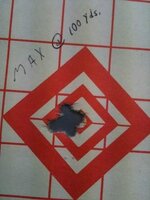- Messages
- 487
- Reactions
- 70
Recently I put together a rife as my "precision tactical" rifle. it is a remington 700 police tactical, hogue pillar bedded stock, harris bi pod, leupold base, rings and a VX3 6.5-20x50mm mil dot scope with the tall turrets for easy adjustments. anyway I have yet to fire it due to the fact that I want everything with the break in to be done correctly. I have heard many different ways to do a barrel break in. should I hand lap the barrel? should I clean the bore between every shot? every fifth shot? how many shots does it take to have your barrel broke in?













